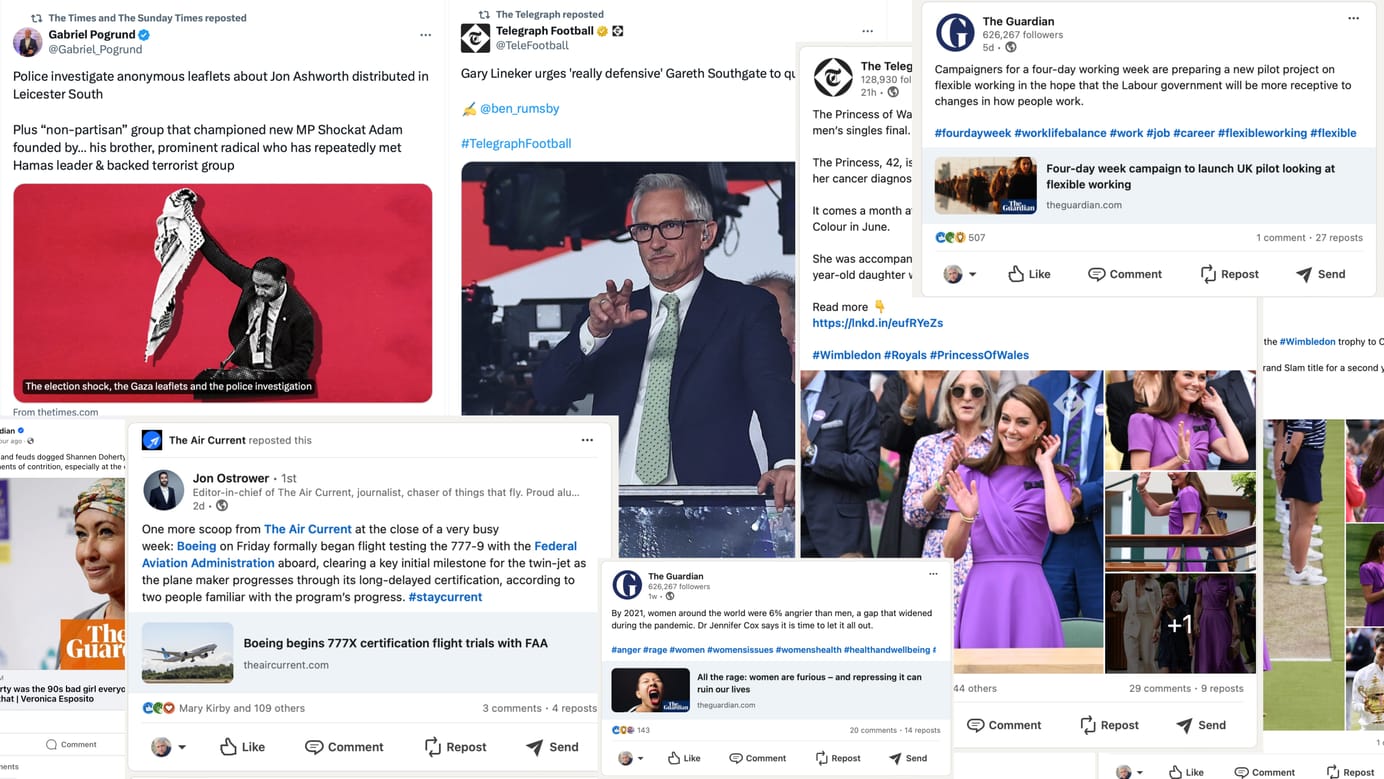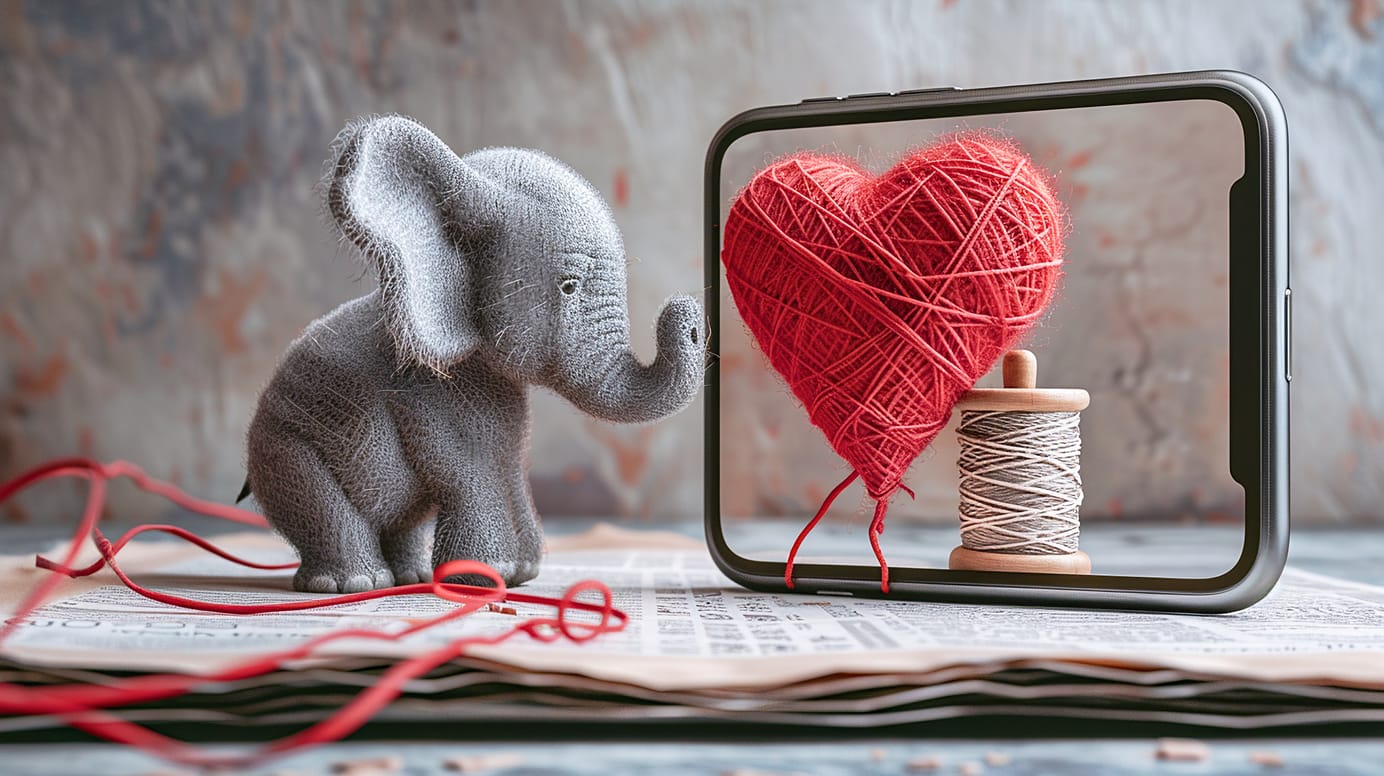
X on the beach
Twitter is dead, and X has risen, zombie-like from its ashes. Now's the time to review your publication's commitment to the platform.
Normally, when I take a couple of weeks off in the summer, things are all quiet. The ol’ blog can go quiet without it having a significant impact. Not this year, though. While I was sunning myself off the coast of France, Elon Musk was changing Twitter into… something else.
Where once a cute white bird on a blue background lurked on my phone, now a harsh X sits on a moody, industrial black background. Elon has gone through with his threat and renamed Twitter “X”.
If ever you needed a sign that Twitter is an entirely different company to the one it used to be, this is it. Sure, there are plenty of signs of the old branding still — on the web, the whole Mac app — but Musk is trying to take one of the few globally recognised names in social media, and change it to something else.
And he has one big reason for doing that.
The Age of X
Musk has been clear about what he wants to do with Twitter. He hopes to turn it into the everything app. To understand what that means, you need to look to Asia, and China in particular. Phones play a different role in purchasing decisions over there — or, at least, their operating systems do because they don’t really matter. Android? iOS? Just wrappers around the app that does matter: WeChat. Pretty much all commerce is transacted through WeChat, including face-to-face payments.
Imagine social media, messaging, the web, online commerce and face-to-face payments, all in one app. That’s WeChat. Other apps, like Naver in South Korea, Grab in Singapore and Line in Japan are evolving in the same direction.
Think of it this way: instead of unlocking your phone and picking from the apps there, you unlock your phone, open your everything app, and do just about all of your online and payment activities there, either directly or through apps within the main app. The everything app usurps the operating system as your default mode of using your phone.
That’s what Musk wants Twitter to be.
He will fail.
The lack of an X factor
He’ll might fail because he’s shown no evidence that he has the skill, insight, or patience to build the sort of software team that will be needed to deliver this. Even if he does, or hires someone who can, he needs a very high level of trust to become a banking app – and neither corporations (whom he’s stiffing on debts) nor consumers are likely to give him that trust. But even if they do, there’s no way the competition authorities in the EU, for example, will let an app reach that level of dominance.
WeChat is a godsend for the authoritarian, surveillance-happy Chinese state. Most functioning western democracies won’t allow that level of power to accrue to a single US company — as long as they’ve learnt the lesson of Facebook.
So what happens to X?
The X files
In the short term, we can expect continued degradation of what most of us see as the core Twitter experience. X is running with a tiny fraction of the team it used to have, and Musk’s priority is building the everything features, not developing out what most of us used the app for. As more people break their Twitter/X habit, the value you gain from time there will decrease, as, proportional, the “X Premium” (formerly Twitter Blue) voices dominate the conversation.
In the medium term, there only really seem to be two major directions for “X”.
Xed out
The most likely seems to be ongoing decline. One of the most significant things about the switch from Twitter to X is that, for me at least, it’s broken my habit of using Twitter. Where once I had a pavlovian reaction to the little bird icon on my screen, honed over the 16 years I’ve been on the service, now I feel nothing. My finger never inexorably dives towards the X in the way it did towards the bird.
As the implications of the rebranding continue to propagate, the app risks losing its part in the online discourse. I’ve seen multiple social media managers conclude they’re more likely to remove Twitter from their online and physical branding than replace it with X. We’ve already seen ABC Australia shutter the majority of its X accounts.
The network effect works both ways: the more people on a network, the faster its value grows. But as people quit, its value collapses exponentially. We don’t need one of the Twitter competitors to succeed for X to die.
You’re my X
The other possibility is that Elon gets bored. He can’t deliver the vision for X he wants due to pesky banks and annoying governments, and so he eventually divests X at a significant loss, and moves on to other things. It’s not like he’s short of other interests, between Tesla, SpaceX, The Boring Company and whatever the heck xAI turns out to be.
Then it’ll depend on who picks up what’s left. The most likely outcome would probably be a reversion to Twitter, and an attempt to rebuild a badly damaged network. It might survive, but it will never be the same again. MySpace has been bought, sold and relaunched many times — but no longer has any cultural relevance.
What’s your X strategy?

All of which leaves us with an important question: what do we do about X? Should it still be part of our engagement mix?
Well, if you are still getting value from Twitter, and can live with the moral compromises of supporting Musk, then do so. There’s no point in abandoning an engagement and acquisition channel that’s delivering value. But, more than ever, you need to be thinking about how you take the value you’re extracting from X, and moving it elsewhere.
The fact that so many journalists are on X, and seem reluctant to leave, tends to disguise the fact that whole communities are exiting the platform. A large chunk of the tech world is now far more active on Mastodon than on Twitter. If you report on tech, and you’re not on Mastodon, you’re missing where the community is. For the moment, X is likely to stay a key source of journo-to-journo discussion, which is why I’m still there.
But that might not be true of your audience.
If you’re not planning an X-it (sorry), you’re not serious about maintaining the relationships that you’ve built with readers and sources over Twitter. On the reader side, you can do all the normal tricks — newsletters, podcast sign-ups and so on. Take those mediated relationships and make them direct.
The many Twitters
As for the sources and engagement side? Well, the bad news is that there’s no simple answer. The many Twitter competitors I listed a few weeks back are likely to be fighting it out for attention and users for years to come — and it could well be none of them ever truly supplants Twitter.
Instead, we might end up with a form of social media diaspora, with different communities landing in different apps. How do you choose where to devote your energies?
Well, that’s (relatively) simple: let the community you’re trying to reach be your touchstone. Yes, it’s time to get your rusty social listening skills out of the box, polish them up, and concentrate on monitoring the various emergent platforms for keywords, phrases and people, until you can see where they’re starting to gather.
And then you invest time in developing your presence there.
X marks the opportunity
There is one other possibility. This is the best opportunity in over 15 years to offer your core community the chance to gather around your brand. If your community is disengaging from X, but not reforming elsewhere, you have an opportunity.
Their need to connect and engage online hasn’t gone away: they just need somewhere they feel safe doing so, and where they can find the right people easily. If you’re up for a gamble, and some community management work, you could make your own brand the hub they gather around. That’s an idea I intend to explore more in the coming months.
But, right now, your core job is to build an X exit plan, while milking the mutating platform for whatever value it has left. Because whatever X turns into, it’s not going to be the global town square we once valued it as.
Sign up for e-mail updates
Join the newsletter to receive the latest posts in your inbox.










